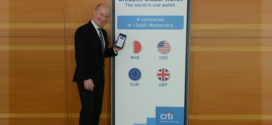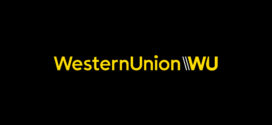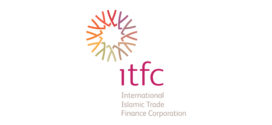UAE, 10 January, 2012 – Standard Chartered sees 2012 as a year of a two-speed global economy. The Bank, which recently topped a ranking of 354 global firms for the accuracy of its economic forecasts over the past two years, sees a slowing global economy in 2012, with a fragile West and a resilient Asia, Africa, Middle East and Latin America.
The mounting crisis in the advanced economies is expected to cause the euro area (-1.5%) and the UK (-1.3%) to fall back into recession and US growth (+1.7%) to remain below-trend.
The world economy grew strongly in 2010, expanding 4.3%, before cooling in 2011, when it grew by around 3.0%. In 2012, Standard Chartered expects a significant slowdown in the first half of the year because of the crisis in the West, slowing global growth to 2.2% for the full-year.
Gerard Lyons, Chief Economist and Group Head of Global Research, said: “This points to the continuation of a two-speed world where a fragile West contrasts with a resilient East. It is a divided and disconnected world economy facing major policy dilemmas. Yet, no region is fully decoupled from events elsewhere. During the first half of 2012, problems in Europe and the West will weigh on global growth. By the second half, stronger growth across China and other emerging economies should pull up worldwide activity. It will be a recovery made in the East and felt in the West. If ever one needed to illustrate the shift in the balance of power, this is it.”
In its annual Global Focus report, the bank forecasts that Asia’s gross domestic product (GDP) growth will slow to a still-robust 6.5% in 2012 from 7.3% in 2011. China is expected to cool significantly in the first few months of 2012 before rebounding, helped by a major policy boost. As a result, China’s growth will decelerate from 9.2% to 8.1% in 2012.
Growth in India, Asia’s third-largest economy, is expected to accelerate mildly to 7.4% in the fiscal year starting 1 April, 2012, from 7.0% in 2011. Indonesia, South East Asia’s largest economy, is forecast to slow to 5.8% from 6.5%.
There are significant underlying growth drivers across the emerging world, including a rapidly expanding middle class, rising infrastructure investment and growing business ties along the `New Trade Corridors’ linking Asia, Africa, the Middle East and Latin America. These factors are likely to become more pronounced as Europe contracts and US consumers deleverage.
The Bank sees similar resilience in Africa, where growth in the two largest economies – South Africa and Nigeria – is likely to slow marginally to 3.1% and 6.9%, respectively, in 2012, from 3.2% and 7.2% this year. In Latin America, Brazil’s growth is likely to slow to 2.5% from 3.0%.
Differentiation remains the key issue in the Middle East, where the resource-rich economies are expected to show resilience, with growth decelerating only moderately in 2012. Asset bubbles in the region have already burst and unsustainable credit booms are long over, providing a stable base for growth. Elevated oil prices bode well for government finances, enabling authorities to adopt counter-cyclical fiscal policies to stimulate growth as the West decelerates.
As Lyons says, “The outlook depends on the interaction between the fundamentals, policy and confidence. The policy challenges will be very apparent in 2012. Emerging economies will use fiscal and monetary policy to boost growth in the first half of the year. But, by the second half of the year, the combination of further quantitative easing in the West and firm commodity prices may cause inflation risks to re-emerge during the latter part of the year. From an investment standpoint, this also raises the potential for a shift back towards macro-prudential measures, including stricter capital controls.”
For the foreign exchange markets, this points to a strengthening US dollar (USD) in the very near term as the US currency performs well in an environment of risk aversion. But on a multi-year basis, this implies a weakening USD, reflecting the significant debt overhang for the US economy and continued, gradual diversification away from the USD by governments and other international investors. The euro is also expected to weaken sharply in the first quarter of 2012 and enter a longer-term downtrend as the euro-area authorities fail to deliver a co-ordinated and credible strategy to solve the region’s problems. The weaker longer-term outlook for the world’s two largest reserve currencies signals the continuation of the multi-year shift into emerging-market economies and currencies, reflecting both their rising role in the global economy and their significant role in global trade. The broader trend of investing in liquid, investment-grade emerging-market currencies is expected to continue.
For commodity markets, although the fragile global backdrop may be similar to that at the start of 2009, tight supply in several raw materials as a result of the sharp drop in investment in new projects during the 2008 financial crisis is likely to put a firm floor under commodity prices, even if global demand declines significantly in the first quarter of 2012.
MENA
The Middle East and North Africa (MENA) is as economically diverse as a region could be, with the oil-rich Gulf Cooperation Council (GCC) countries facing very different economic dynamics than countries without rich resource endowments. The region is also relatively open and is therefore subject, to varying degrees, to global economic trends. But it is local factors that will ultimately determine economic performance in 2012.
Marios Maratheftis, Head of Research, Europe, Middle East, Africa and Americas, Standard Chartered said “The economic and market implications of Europe’s debt problems bring back memories of 2009. However, parts of MENA are in a significantly stronger position now. This is particularly true for the GCC economies, which we expect to show resilience, with growth decelerating only moderately in 2012. Asset bubbles in the GCC have already burst, and unsustainable credit booms are long over. Base effects have become more favourable. Tight credit conditions are set to persist, with Saudi Arabia perhaps being the main exception. While tighter credit will not help growth, it will not be as big a drag as it was in 2009, when credit growth in the region went from an uncontrollable pace to a complete halt.”
We expect oil prices to remain elevated in 2012. This bodes well for the government finances of oil-exporting countries, and it should enable counter-cyclical fiscal responses. Fiscal policy in Saudi Arabia is already on an expansionary trajectory and should continue to drive growth in 2012.
Abu Dhabi and Qatar adopted a more conservative approach to government expenditure in 2011. Their project pipelines are full, though, and while we do not anticipate a boom in government spending, any increase will help to pick up the slack in the economy. Stable oil prices provide governments in the region with ample fiscal space.
Non-oil-producing countries, which are also dependent on net capital inflows, will face a more challenging 2012. Growth in Jordan and Egypt will be fragile, and both countries will need to attract foreign inflows to boost their reserves and fund their current account and fiscal deficits. Jordan is attracting inflows from the GCC, and its prospects for joining the bloc are still on the table, although nothing is final. In Egypt, political stability will be the key factor, as it is necessary to attract both investment and tourism. The country’s presidential elections in June 2012 will be widely watched.
Commenting on policies, Maratheftis said:”GCC countries have the fiscal space to shift to more expansionary policy. Policy in Saudi Arabia is already expansionary, and this is set to continue in 2012. We also anticipate higher spending in Qatar and, to some extent, Abu Dhabi. In Egypt and Jordan, fiscal headroom is limited and the focus will be on financing the funding gap rather than on growth”
Monetary policy in the GCC will continue to be tied to US policy, as the region’s currency pegs face no pressure for either revaluation or devaluation.
UAE
The UAE experienced solid economic growth in 2011, benefiting from improving domestic dynamics and a ‘flight to safety’ from adverse developments around the Arab Spring. Political turmoil in the region boosted Abu Dhabi’s oil sector (as oil output rose to compensate for lower output from Libya), and Dubai’s non-oil economy (trade, tourism and retail benefited). We expect both factors to continue to drive the economy in 2012 to some extent, though growth will moderate.
We forecast that the UAE economy will grow by 2.4% in 2012 versus 3.8% in 2011, largely because of base effects. Even though oil production has increased in 2011, it is currently near the UAE’s output limits. And while Dubai’s key non-oil sectors – especially tourism and retail – should maintain their positive dynamics in 2012, we believe it will be difficult to achieve the same upside we have seen in 2011 given the more challenging global environment.
We forecast Abu Dhabi (60% of the UAE’s GDP) to grow by 3.0% in 2012. Growth will be supported by a cautious resumption of spending in H1, followed by an acceleration in H2, as project reviews initiated in 2011 are completed. Note that expenditure on non-oil projects in Abu Dhabi has been low in 2011, so this is one area with upside potential for 2012.
We expect that UAE output will average around 2.5mbd in 2012, similar to our estimated average for 2011. The IEA estimates that the UAE’s production capacity will stand at 2.74mbd at the end of 2011. With little scope for further output increases (given the resumption of Libyan production) and given our view that significant cuts are unlikely amid increasing demand from non-OECD countries, oil is unlikely to be a significant factor in raising or detracting from GDP growth (especially Abu Dhabi’s) in 2012.
We expect Dubai’s economy (29% of UAE GDP) to grow by 2.4% in 2012. Dubai’s tourism and retail sectors will continue to be the main drivers of the emirate’s recovery. Hotel occupancy rates have averaged close to 70-80% for most of 2011 (rising to almost 100% during holidays), as tourists, especially from the GCC, turn their backs on traditional Middle East tourist spots for the stability of Dubai. Occupancy rates have remained high, despite a significant increase in hotel rooms over the past four years. We expect Dubai to continue to benefit from a relative flight to quality in 2012, as political and stability dynamics in some MENA countries remain challenging.
Inflation in the UAE should average 1.6% in 2012, compared with our 2% forecast for 2011. In fact, prices fell 0.1% y/y in October (the first month of deflation in 20 months). Housing, which makes up 39.3% of the inflation basket, has acted as a drag on overall inflation in 2011; we expect it to continue to do so in 2012 given still-significant overcapacity in the UAE housing market.
For further information please contact: Shady Shaher, Senior Economist Middle East and North Africa
+9714-508-3647
Or
Ramy Lawand
Senior Regional Manager, External Communications
T: +971 4 508 2564 – M: +971 56 675 9894
 Cash And Trade Magazine For Cash and Trade professionals in the Middle East
Cash And Trade Magazine For Cash and Trade professionals in the Middle East





2 comments